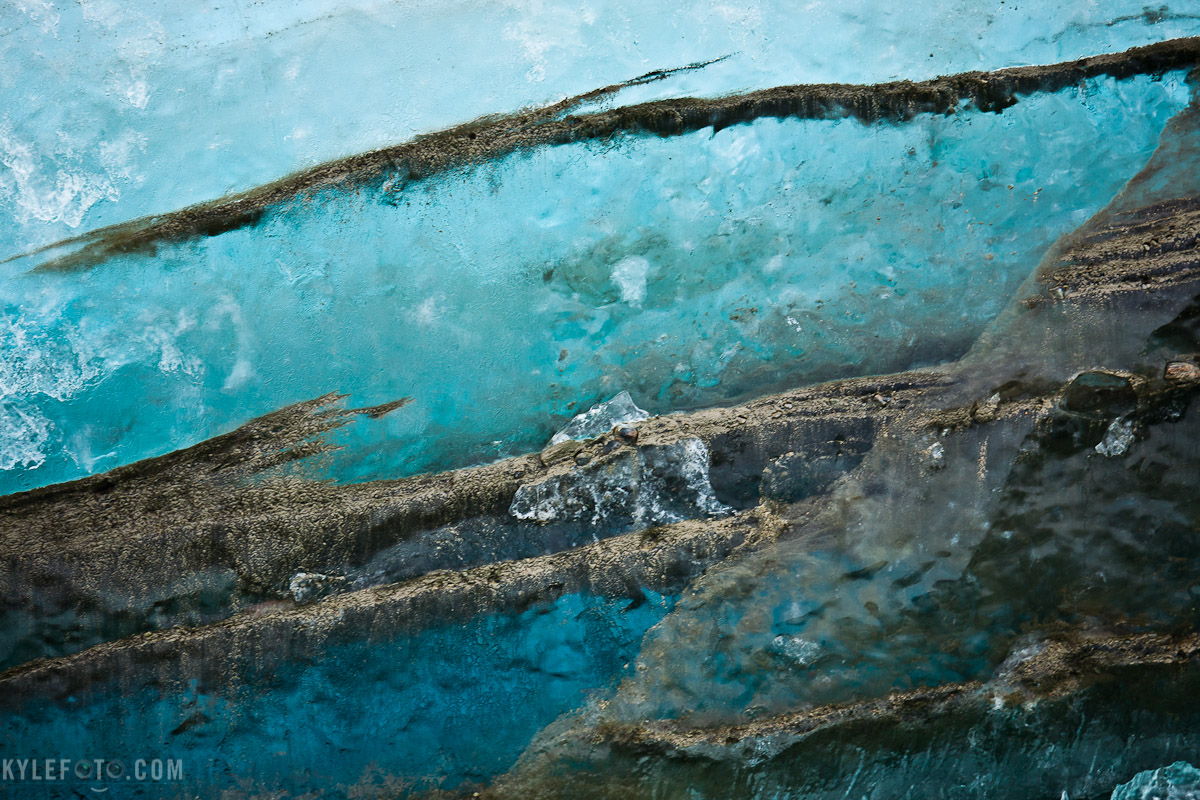Canadian Arctic The history of an iceberg is always etched into the ice. But rarely is hard evidence of it’s birth so glaringly obvious the way it is in this detail shot of a piece of ice.
As I’m sure you’ve heard me say, an iceberg starts of as a glacier. A glacier starts off as layers of snow building up over hundreds or thousands of years along the mountain side. The tremendous weight of the snow on itself squeezes air out of the compacting ice and it becomes more clear and blue. So imagine a massive glacier slowly moving down a mountain side, the deepest part of the glacier is grinding away at the mountain, carving out U shaped valleys and pulverizing rock into dirt and silt. The ice at the bottom of the glacier is underneath hundreds of meters of ice, thus it’s the clearest, but it will also be exposed to the rock and dirt. When the glacier finally dumps itself into the ocean these ancient pieces of ice will carry remnants of the mountain with it.
That’s what you’re looking at here. A piece of a glacier that was actively carving away at the mountain that has made it’s way across the canadian arctic.
Photographic details: I had to poke my camera through a dark hole in an iceberg to get this, so it was relatively dark. I couldn’t shoot like I normally do, I just stuck my arms out with my camera and hoped for the best. Yeah professional photographers blindly shoot and do guesswork too! I think I would have made it easier on myself if I used a higher ISO of 400 or so instead of 100.
1/50s f/5.6 ISO100 260mm
[button size="large" link="http://kylefoto.smugmug.com/Other/world/20164645_BG7whF#1633537504_gkXKjxQ" linkTarget="_blank" color="blue"]Order Print through Smugmug[/button]




